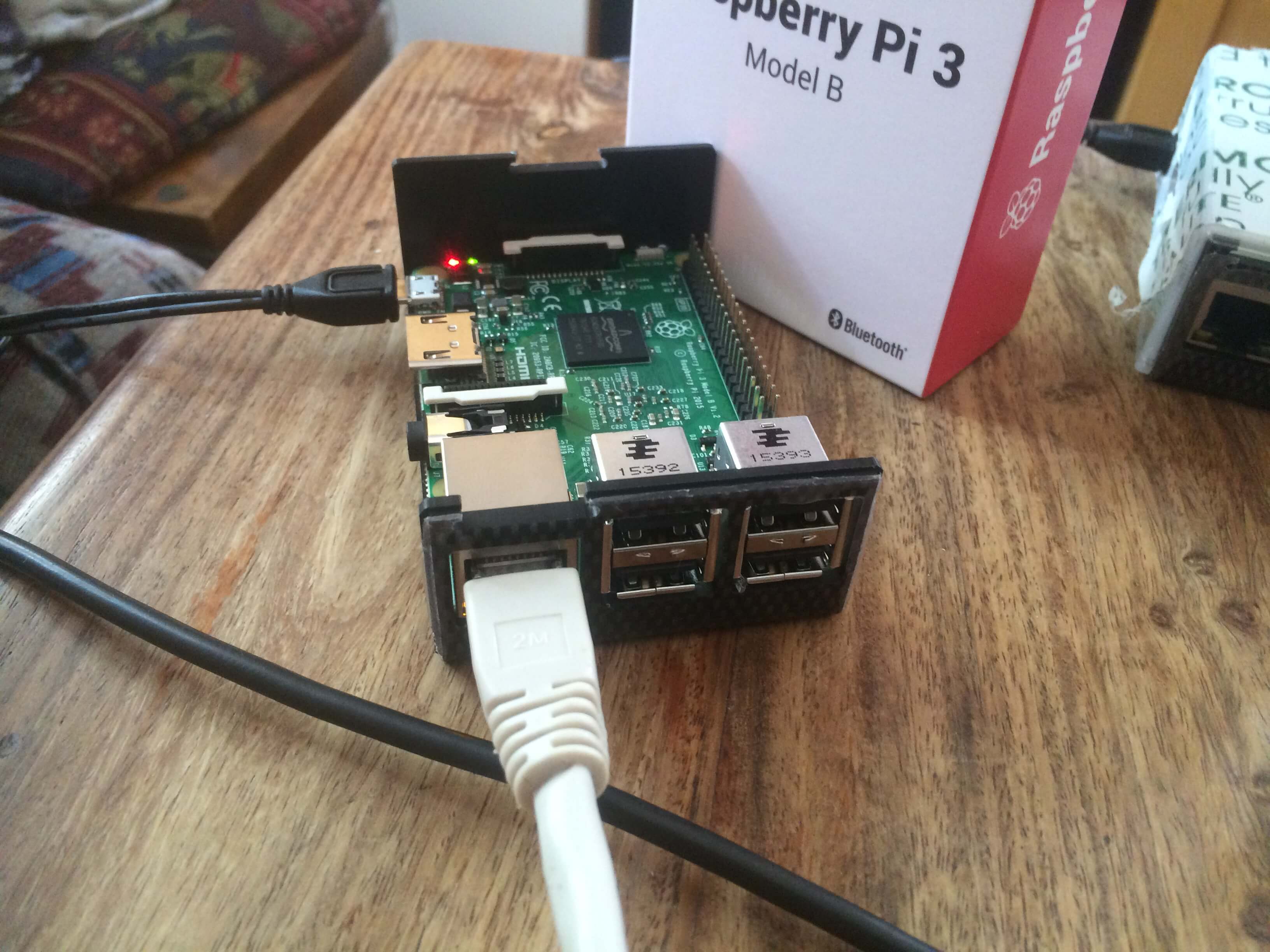How To Use Raspberry Pi Behind A Firewall Without MAC Address: The Ultimate Guide
So, you're into Raspberry Pi projects, but you've hit a roadblock? Let’s face it—getting your Raspberry Pi to work behind a firewall without using its MAC address can feel like trying to sneak past Fort Knox. But don’t worry, because we’ve got you covered! In this guide, we’ll walk you through how to use Raspberry Pi behind a firewall without MAC filtering like a pro. Whether you're a tech enthusiast or just starting out, this article is here to simplify things for you. Keep reading to uncover some game-changing tips and tricks!
Firewalls are awesome when it comes to security, but they can be a real pain if you're trying to access your Raspberry Pi from outside your network. Many people rely on MAC filtering as a solution, but what if you don’t want to use it? Or worse, what if your network doesn’t even allow MAC filtering? Sounds tricky, right? But trust me, there’s a way around it. In this article, we’ll explore alternative methods that are just as effective—if not better!
By the end of this guide, you’ll have all the tools and knowledge you need to set up your Raspberry Pi securely and efficiently, even behind the toughest firewalls. No MAC address? No problem. Let’s get started!
- Hdhub4u In Com Your Ultimate Movie Streaming Destination
- Laura Silsby Clinton The Untold Story Of A Resilient Figure
Table of Contents
- Understanding Firewalls and Raspberry Pi
- Raspberry Pi Basics: What You Need to Know
- Why Avoid Using MAC Address?
- Alternative Methods to Access Raspberry Pi
- Port Forwarding: The Secret Weapon
- Using SSH Tunnels for Secure Access
- Setting Up a VPN for Raspberry Pi
- Dynamic DNS: Keeping Things Simple
- Cloud Solutions: The Modern Approach
- Troubleshooting Common Issues
Understanding Firewalls and Raspberry Pi
Alright, let’s break it down. A firewall is like a digital bouncer at a club—it decides who gets in and who stays out. For most home or office networks, firewalls are set up to protect against unauthorized access. But what happens when you want to access your Raspberry Pi from outside your network? That’s where things get complicated.
Now, the Raspberry Pi is an incredible little device. It’s small, affordable, and packed with potential. But when it comes to networking, especially behind firewalls, it can be a bit of a challenge. Many people think MAC filtering is the only way to go, but as we’ll see, there are plenty of other options that are just as effective—if not better.
Here’s the deal: firewalls often block incoming traffic unless you explicitly allow it. This is where techniques like port forwarding, SSH tunnels, and VPNs come into play. They let you access your Raspberry Pi securely without needing to rely on MAC filtering.
- Vince Mcmahon Latest News 2025 The Wrestling Titans New Adventures
- Aditi Mystri Video The Rising Star In The Digital Age
Raspberry Pi Basics: What You Need to Know
Before we dive into the nitty-gritty of accessing your Raspberry Pi behind a firewall, let’s cover some basics. If you’re new to Raspberry Pi, here’s a quick rundown:
- Raspberry Pi: A single-board computer that’s perfect for learning, tinkering, and building projects.
- Operating System: Most Raspberry Pi projects use Raspbian or other Linux-based systems.
- Networking: Your Raspberry Pi can connect to your network via Wi-Fi or Ethernet.
- Firewall Challenges: Firewalls can block incoming connections, making remote access tricky.
Understanding these basics will help you navigate the steps ahead. Trust me, it’ll make everything a whole lot easier!
Why Avoid Using MAC Address?
MAC filtering might seem like the obvious choice, but there are good reasons to avoid it:
- Security Risks: MAC addresses can be spoofed, which means they’re not as secure as you might think.
- Network Restrictions: Some networks don’t allow MAC filtering, making it a non-starter.
- Complexity: Managing MAC addresses can become cumbersome, especially in larger networks.
Instead of relying on MAC filtering, we’ll explore alternative methods that offer better security and flexibility.
Alternative Methods to Access Raspberry Pi
So, if MAC filtering isn’t the answer, what is? Here are some of the best methods to access your Raspberry Pi behind a firewall:
Port Forwarding
Port forwarding is like setting up a special lane for your Raspberry Pi to communicate with the outside world. By forwarding specific ports, you can allow incoming traffic to reach your device without compromising security.
SSH Tunnels
SSH tunnels are another great option. They create a secure, encrypted connection between your Raspberry Pi and your remote device. This method is perfect for accessing your Pi from anywhere in the world.
VPNs
Virtual Private Networks (VPNs) offer a secure way to connect to your Raspberry Pi. By setting up a VPN server on your network, you can access your Pi as if you were on the same local network.
Port Forwarding: The Secret Weapon
Let’s talk about port forwarding in more detail. Here’s how it works:
- Log in to your router’s admin interface.
- Find the port forwarding settings.
- Set up a rule to forward a specific port to your Raspberry Pi’s IP address.
- Save the changes and test the connection.
Port forwarding is a powerful tool, but it’s important to use it wisely. Always choose a non-standard port to minimize the risk of unauthorized access.
Using SSH Tunnels for Secure Access
SSH tunnels are a fantastic way to access your Raspberry Pi securely. Here’s how you can set one up:
- Install SSH: Make sure SSH is installed and enabled on your Raspberry Pi.
- Generate Keys: Create SSH keys for secure authentication.
- Connect: Use an SSH client to connect to your Raspberry Pi from a remote device.
SSH tunnels are encrypted, making them a great choice for secure remote access.
Setting Up a VPN for Raspberry Pi
VPNs are becoming increasingly popular for remote access. Here’s how you can set one up for your Raspberry Pi:
- Choose a reliable VPN provider.
- Install the VPN client on your Raspberry Pi.
- Configure the client to connect to the VPN server.
- Test the connection to ensure everything works as expected.
VPNs offer a high level of security and flexibility, making them a great choice for accessing your Raspberry Pi behind a firewall.
Dynamic DNS: Keeping Things Simple
Dynamic DNS (DDNS) is a simple yet effective way to access your Raspberry Pi. Here’s how it works:
- Sign Up: Create an account with a DDNS provider.
- Set Up: Configure your router or Raspberry Pi to update the DDNS service with your current IP address.
- Access: Use the DDNS hostname to connect to your Raspberry Pi from anywhere.
DDNS is perfect for those who don’t have a static IP address. It keeps things simple and hassle-free.
Cloud Solutions: The Modern Approach
Cloud solutions are becoming increasingly popular for remote access. Services like ngrok and remote.it make it easy to access your Raspberry Pi from anywhere in the world. Here’s how they work:
- ngrok: A simple tool that creates a secure tunnel to your Raspberry Pi.
- remote.it: A cloud-based service that allows you to access your Raspberry Pi without needing to configure your firewall.
Cloud solutions are perfect for those who want a hassle-free experience. They handle all the technical details for you, leaving you free to focus on your projects.
Troubleshooting Common Issues
Even the best-laid plans can go awry. Here are some common issues you might encounter and how to fix them:
- Connection Issues: Make sure your firewall rules are correctly configured.
- SSH Problems: Check your SSH keys and ensure the service is running.
- VPN Failures: Verify your VPN settings and test the connection.
Don’t get discouraged if things don’t work right away. With a little troubleshooting, you’ll have your Raspberry Pi up and running in no time!
Kesimpulan
And there you have it—your ultimate guide to using Raspberry Pi behind a firewall without relying on MAC filtering. Whether you choose port forwarding, SSH tunnels, or cloud solutions, you now have all the tools you need to access your Raspberry Pi securely and efficiently.
So, what are you waiting for? Dive in, experiment, and let us know how it goes. And don’t forget to leave a comment or share this article with your friends. Who knows? You might just inspire someone else to take on their own Raspberry Pi project!



Detail Author:
- Name : Dillan Swift
- Username : zrunolfsson
- Email : destiny.smitham@torphy.info
- Birthdate : 2001-03-13
- Address : 849 Fay Isle Apt. 480 Tommieport, IL 69806-7745
- Phone : (330) 772-8315
- Company : Harris Inc
- Job : State
- Bio : Rerum quam eius aut in commodi voluptatem provident aut. Exercitationem fugiat omnis odit corrupti suscipit dolores. Deserunt ipsam laboriosam ducimus nostrum exercitationem sit.
Socials
instagram:
- url : https://instagram.com/reinger2016
- username : reinger2016
- bio : Velit sed culpa in quia omnis modi nostrum. Id enim porro ab. Laborum aut rerum provident in et at.
- followers : 3438
- following : 61
facebook:
- url : https://facebook.com/ezekiel_id
- username : ezekiel_id
- bio : Voluptatem cupiditate harum labore in. Sint tempore assumenda sapiente dolorem.
- followers : 6598
- following : 31